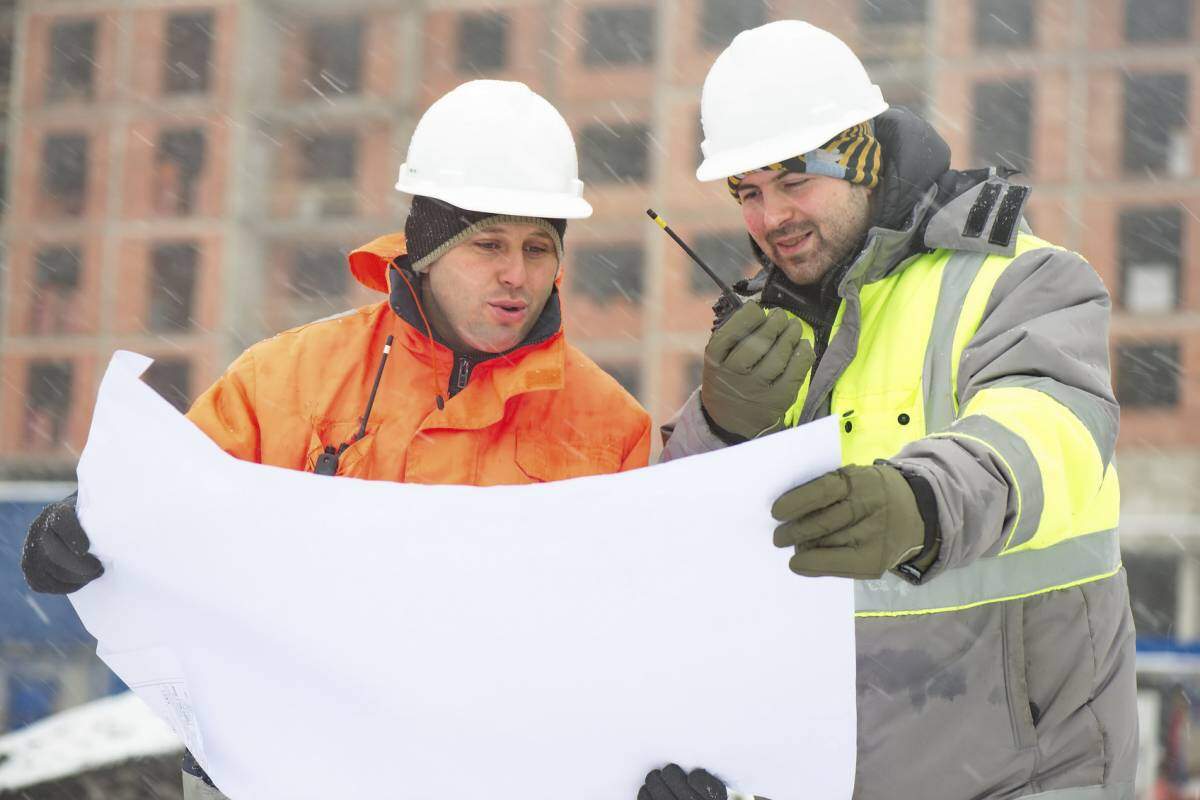It’s important to follow winter safety tips to keep St. Louis workers safe while they are working in cold weather conditions.

During the winter months, construction work slows down, but does not come to a complete stop. Many construction workers have to work year round. Construction work is already one of the most dangerous occupations, and winter weather hazards can make it even more dangerous. Weather conditions such as extreme cold, ice and snow can lead to disaster if an employer and workers do not follow safety protocol. Taking proper safety precautions can significantly reduce the risk of serious injuries and even death in the winter season.
Winter Construction Safety Tips
The Occupational Safety and Health Administration (OSHA) website offers the following winterizing safety tips for all types of construction jobs:
- Protect pipes: Workers should never try to thaw frozen pipes with an open flame as it can cause fires and also result in a steam explosion. Only a space heater, heat gun and heat lamp should be used to thaw frozen pipes. It is also important to ensure that the personnel responsible for operating these devices are adequately trained.
- Avoid fire hazards: Non-combustible ladders should be used in place of wooden ladders. It should be ensured that all materials are stored away from open flames. All heating devices should comply with local safety codes.
- Protect water tanks: All water tanks should be routinely checked to make sure that they do not freeze.
- Ensure that equipment and temporary structures are secure and stable: It must be ensured that all construction materials including netting, ladders and accessories are secured as they can shift in bad weather. Small items should be stored in a tool box or secure container. All temporary structures and large equipment such as sidewalk sheds, fencing and scaffolding should be properly secured to avoid injury.
- Remove debris: Any kind of debris can pose a risk in work environments, however, it is particularly true for winter construction. Snow and ice on overhangs and rooftops should be regularly cleared to prevent falling to the ground level. It must be kept in mind that snow can hide dangerous materials that can fall to a lower level and injure a worker.
- Avoid working in icy conditions: No matter how time sensitive the construction job is, workers should avoid working on scaffolding in ice and snow unless it is absolutely necessary.
- Inspect cranes properly for use in bad weather: It is important to maintain and inspect cranes on a regular basis to keep them functioning safely. Check for any ice or water accumulation on the crane as it can result in a falling ice or slip and fall hazard.
Injured in a Construction Accident?
If you have been injured at work, it is important to speak to a workers compensation lawyer about your legal rights and options. Please contact attorney James M. Hoffmann for a FREE consultation about your case. Our legal team has a strong history of helping injured workers get the medical attention and financial compensation that they need. Contact our St. Louis, Missouri workers compensation law firm to ensure that your rights are protected. Please call (314) 361-4300 or complete our Online Case Evaluation Form.
Workplace Injury and Accident Causes
Asbestos Exposure
Asbestos Removal
Second Hand Asbestos Exposure
Sexual Assault Workplace
Physical Assault at Workplace
Workplace Injuries Assembly Line
At Fault Accident
Workplace Attack
Benzene Exposure
Injured on Lunch Break
Building Collapse
Workplace Bullying
Chemical Exposure in the Workplace
Chemical Hazards in the Workplace
Cold Stress in the Workplace
Combustible Dust Explosion
Computer Use
Construction Site Accident
Conveyor Belt Accident
On the Job Injury Cause by Coworker
Crane Accident
Injuries from Desk Jobs
Diesel Exhaust Fumes Exposure
Digging Injury
Breaking Company Policy
Drowning at Work
Workplace Drug Use
Electrical Workplace Accidents
Elevator Accident
Equipment Accident
Ergonomics in the Workplace
Excessive Overtime
Workplace Explosion
Extreme Danger
Fall at Work
Fire in the Workplace
Slicer Accident
Forklift Accident
Walk in Freezer
Gas Pipeline Accident
Hard Work
Workplace Hazardous Substances
Hazardous Equipment in the Workplace
Heavy Machinery Accident
Horseplay in the Workplace
Danger at Workplace
Insomnia in the Workplace
Jumping Accident
Ladder Falls at Work
Loading Dock Accident
Machinery Accident Workplace
Equipment Failure Accident
Mining Accident
Mold in the Workplace
Nail Gun Accident
Workplace Noise
Non Collision Accident
Heavy Objects
Workplace Office Equipment
Opioid Use
Injury at Work Due to OSHA Violation
Overexertion Injuries at Work
Use of Pain Killers
Power Tool Injury
Inadequate PPE
Repetitive Motion Injuries in the Workplace
Mansfield Bar
Scaffolding Accident
Secondhand Smoke in the Workplace
Side Effects
Silica Exposure
Sleep Disorder
Slip and Fall Injuries in the Workplace
Stairs at Work
Struck by a Vehicle
Tar Fumes
Toxic Chemical Exposure
Toxic Fumes in the Workplace
Car Accident While Working
Trench Collapse
Trips at Work
Unsafe Working Conditions
Workplace Violence
Welding Injury
Winter Hazards in the Workplace
Working Shifts
